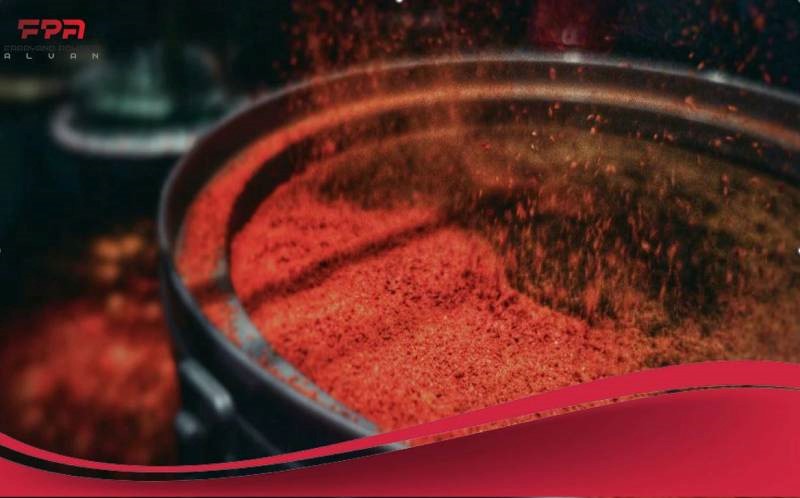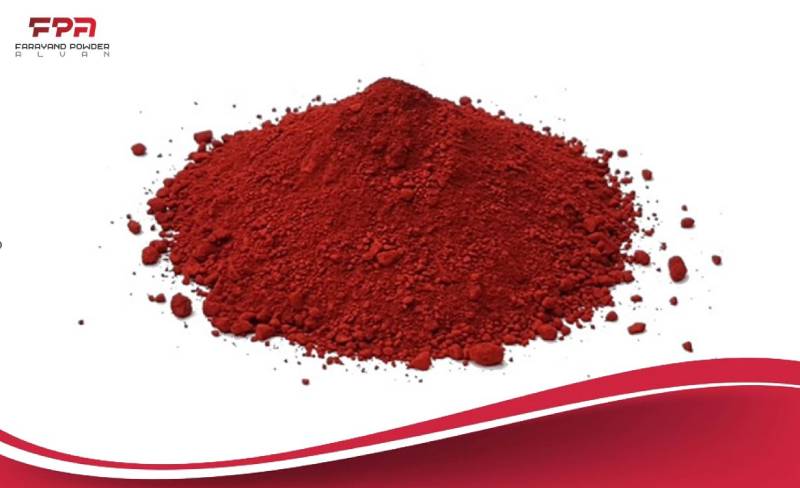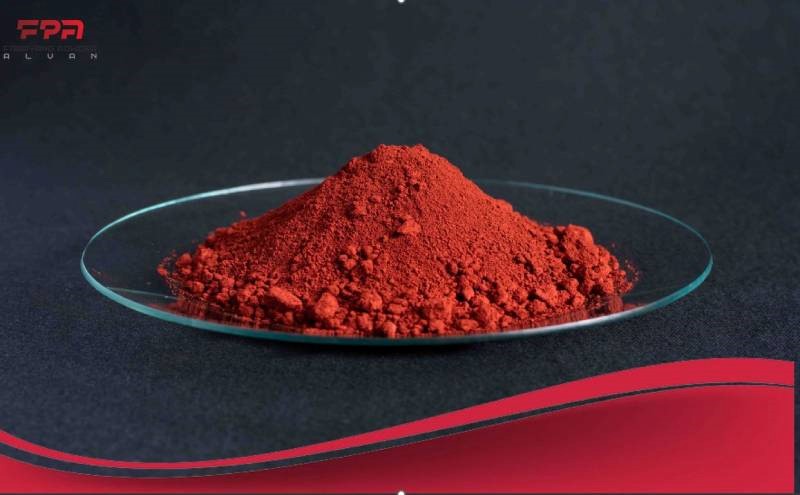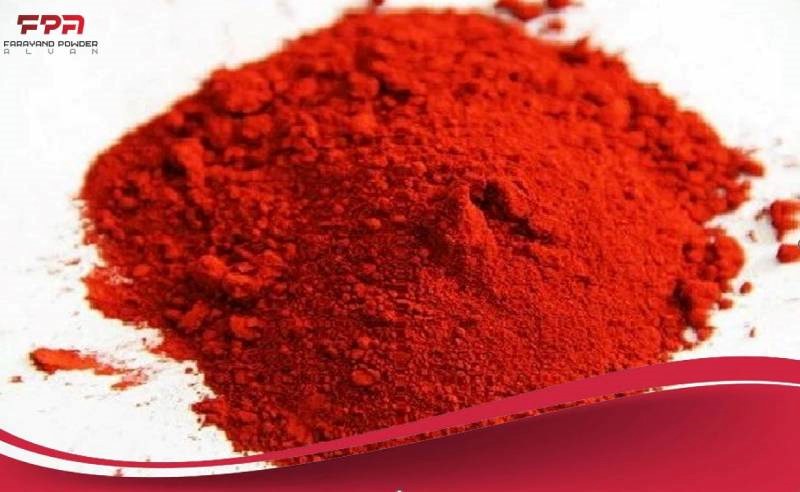You must have heard about iron oxide if you want a red pigment for your industries. You may also have this question: what is natural red iron oxide? So stay with us in the rest of this article to provide comprehensive information about it and introduce you to natural red iron oxide.
What is natural red iron oxide?
First, it is better to know what is natural red iron oxide and learn more about it. Natural red iron oxide, also known as hematite or red ochre pigment, is a mineral pigment that derives its distinctive red color from its chemical composition and crystal structure.
It is one of the world's most common and widely used natural pigments, valued for its rich, earthy hue. This natural pigment has a long history of use, dating back thousands of years to ancient civilizations.
Due to its vibrant red hue and relative stability, it has been employed in various applications, such as cave paintings, pottery decoration, and cosmetics. Hematite is also known for its associations with folklore, spirituality, and healing properties in different cultures.
The hue of naturally occurring red iron oxide can range from a rich crimson to a reddish-brown, dependent on variables such as impurities and the unique geological circumstances in which it takes shape. Its mineral composition is typified by a metallic sheen and a recognizable red mark when rubbed on a surface. Hematite is often present in sedimentary, metamorphic, and igneous rock formations and soils with deposits rich in iron.

natural red iron oxide formula
We also need the natural red iron oxide formula to learn more about it. Natural red iron oxide, or hematite, is a naturally occurring mineral with the chemical formula Fe2O3, comprising two iron (Fe) atoms and three oxygen (O) atoms. It derives its vibrant red color from the arrangement of its atomic structure and the interaction of light with its crystal lattice.
Hematite is frequently discovered in diverse geological environments, such as sedimentary rocks, banded iron formations, and hydrothermal veins. Its existence often suggests water's past or current presence, making it a crucial mineral in studying Earth's history and geology.
natural red iron oxide benefits
In this section, we discuss natural red iron oxide benefits. Using this material has advantages over others that every consumer should know.
Non-toxic and Environmentally Friendly
Natural red iron oxide is a safe and non-toxic pigment derived from natural sources and does not release harmful chemicals or fumes into the environment or to humans.
Color Stability
One of its primary uses is as a pigment in paints and coatings. It offers excellent color stability, resisting fading and degradation over time, which is particularly valuable for outdoor applications where exposure to sunlight and weather can be challenging.
UV Resistance
It has inherent UV-blocking properties, making it suitable for sunscreens, cosmetics, and other products designed to protect against the harmful effects of ultraviolet radiation.
Corrosion Protection
In industrial coatings, natural red iron oxide can act as a barrier against corrosion on metal surfaces, prolonging the lifespan of structures and equipment.
Thermal Stability
Its ability to maintain color and structure in high temperatures makes it useful in applications of ceramics, glass, and refractory materials.
Health and Cosmetics
Natural red iron oxide is used in cosmetics and skin care products for its natural coloration properties. It is considered safe for use on the skin, adding color to makeup, lotions, and other products.

Uses of Natural Red Iron Oxide
We should be aware of natural red iron oxide uses in different industries.
Paints and Coatings
Red iron oxide is a widely used pigment in paints and coatings for various applications, including automotive, architectural, industrial, and artistic colors.
Construction Materials
Natural red iron oxide is used in construction to color building materials, enhancing their aesthetic appeal and durability.
Plastics and Polymers
In the plastics and polymer industry, red iron oxide is commonly utilized as a coloring agent to produce various shades of red and brown in plastic products, including toys, packaging materials, and consumer goods.
Ceramics
The pigment is essential for glazes and ceramic colorants in the ceramic industry. It helps achieve various shades of red, brown, and orange in pottery, tiles, and decorative ceramic products.
Printing Inks
Natural red iron oxide produces inks, including flexographic and gravure inks. Its stable and consistent color properties make it suitable for high-quality printing applications.
Cosmetics
Due to its safe and attractive red color is a common ingredient in cosmetics, especially in the production of lipsticks, eyeshadows, and nail polishes.

natural red iron oxide side effects
So far, we have known what is natural red iron oxide and what are the benefits of this material. However, it may also have disadvantages we must know about for safe use.
Natural red iron oxide is generally considered safe and poses no significant health risks when used by safety guidelines. However, exposure to high concentrations of this substance can result in potential side effects similar to many other materials.
Inhalation of fine iron oxide particles, such as those found in dust from grinding or handling the pigment without proper protection, may lead to respiratory issues and lung irritation. Prolonged or repeated exposure could result in lung conditions like pneumoconiosis.
Additionally, there is a minimal risk of skin irritation or allergies when in direct contact with the pigment, but this is typically not a concern in well-formulated products. To ensure safety, it's essential to use natural red iron oxide by recommended guidelines and to wear appropriate protective gear when working with it in powdered form, especially in industrial settings.

Disadvantages of natural red iron oxide use
After checking what is natural red iron oxide and what is red iron oxide used for, we need to know whether there are any disadvantages besides the many benefits considered for this material. Therefore, we mention the disadvantages of natural red iron oxide uses here.
Corrosion and Deterioration
The primary disadvantage of natural red iron oxide is its association with corrosion. When iron comes into contact with moisture and oxygen, it undergoes oxidation, forming iron oxide. This process leads to the deterioration of iron-based materials, causing structural weakness and reduced lifespan. Iron oxide can be a significant drawback in applications where corrosion resistance is critical.
Aesthetic Concerns
In industries such as construction and architecture, the reddish-brown color of iron oxide may be undesirable for certain applications. The natural hue of iron oxide may clash with the intended aesthetic or color scheme, limiting its use in design-sensitive projects.

Limited UV Stability
Iron oxide pigments may exhibit limited stability under prolonged exposure to ultraviolet (UV) radiation. This can result in color fading, reducing the visual appeal of products or structures over time. Alternative pigments with better UV stability may be preferred for applications where color retention is crucial.
Environmental Impact
The mining and extracting of iron ore to produce iron oxide can have significant environmental consequences. Deforestation, habitat disruption, and soil erosion are associated with iron ore extraction, contributing to environmental degradation. Additionally, the process of rust formation itself involves the release of iron ions, which can negatively impact aquatic ecosystems if the runoff reaches water bodies.
Health Concerns
Iron oxide particles can pose health risks, particularly when inhaled. Fine iron oxide particles may contribute to respiratory issues, and long-term exposure in certain occupational settings can lead to conditions such as pneumoconiosis. Adequate safety measures, including personal protective equipment, should be implemented in environments where exposure is possible.
Reduced Electrical Conductivity
The presence of iron oxide can decrease the electrical conductivity of materials. Iron oxide may hinder performance in applications where conductivity is crucial, such as in electronic components or wiring.

Difficulty in Removal
Once iron oxide stains or deposits form on surfaces, they can be challenging to remove. This is particularly relevant in infrastructure maintenance, where iron oxide can compromise surface appearance and structural integrity.
Potential for Staining
Iron oxide can potentially stain adjacent materials, especially when exposed to moisture. This staining can be problematic in applications where cleanliness and appearance are paramount, such as in the pharmaceutical or food industries.
Variable Composition
Natural red iron oxide can have a variable composition, leading to inconsistencies in its properties. This variability can pose challenges for industries requiring precise and consistent product characteristics.
Cost Considerations
While natural red iron oxide is abundant, its extraction, processing, and incorporation into various products can entail costs. In some cases, alternative pigments or corrosion-resistant materials may be more cost-effective, especially considering long-term maintenance and durability.
Conclusion
natural red iron oxide is a remarkable and versatile pigment that has played a significant role in human civilization for centuries. Its deep, vibrant red hue has not only adorned countless works of art but has also found application in numerous industrial sectors, ranging from construction and ceramics to cosmetics and plastics. Its natural origin, extracted from iron-rich minerals, makes it an environmentally friendly choice compared to synthetic alternatives.
With over 30 years of experience in producing various industrial micronized powders and an experienced team with extensive knowledge of pigments, Farayand Powder Alvan Co. has been a reputable supplier in various industries and is honored to provide technical consultation to customers for the best and most economical solutions.


